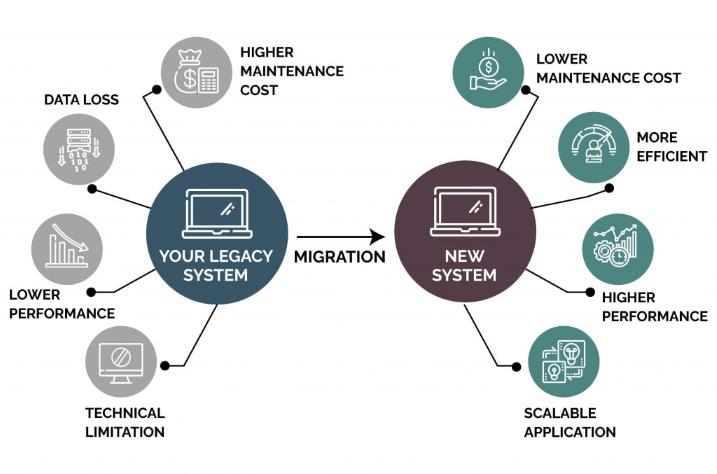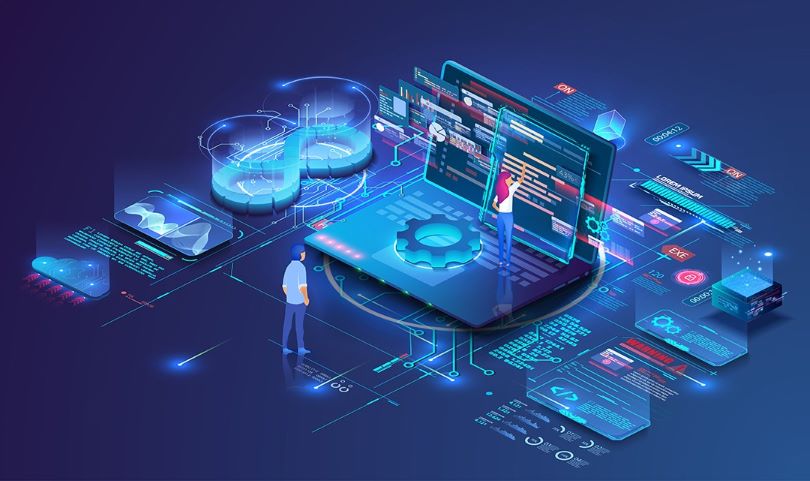Modernizing Legacy Software Systems: A Strategic Imperative

The Burden of Legacy Systems
In the ever-evolving landscape of technology, companies often find themselves grappling with the challenges posed by legacy systems.
These outdated systems, while once reliable workhorses, have become increasingly cumbersome and inefficient, hindering productivity and innovation. As the business world accelerates towards digital transformation, the need to modernize these legacy systems has never been more pressing.
"The greatest danger in times of turbulence is not the turbulence itself, but to act with yesterday's logic." - Peter Drucker
Legacy systems, often built on outdated technologies and architectures, cause problems.
- Hinder an organization's ability to innovate and adapt to changing market conditions
- Difficult and costly to maintain
- Incompatibility with modern systems
- Difficult to hire and onboard new talent
- Lack the flexibility to scale
- Pose security risks due to outdated security protocols
- Lack of third-party support
It's a vicious cycle that many businesses find themselves trapped in, unable to break free from the shackles of outdated technology.
Challenges of Legacy System Modernization
Modernizing legacy systems poses several challenges, including determining the most suitable modernization approach, ensuring minimal disruption to existing operations, and managing costs.
Organizations must carefully assess their legacy systems to identify areas that require modernization and develop a comprehensive modernization strategy that aligns with their business goals.
One common modernization approach is the "lift and shift" method, which involves migrating legacy systems to the cloud to improve scalability and reduce maintenance costs.
However, this approach may not fully leverage the capabilities of modern cloud technologies and may result in suboptimal performance.
Benefits of Modernizing Legacy Systems
Despite the challenges, modernizing legacy systems offers several benefits, including improved operational efficiency, improved agility and adaptability, enhanced security, and the ability to leverage new technologies such as cloud computing, artificial intelligence, and machine learning.

Modernizing legacy software has numerous benefits.
- Increased Security
- Improved efficiency
- Cost Reduction
- Better third party tool integration
- Increased agility / flexibility
- Easier adoption of advanced / modern tech
- Greater scalability
- Enhanced customer experience
- Easier regulatory compliance
Best Practices for Legacy System Modernization
To successfully modernize legacy systems, organizations should follow best practices such as:
- Conducting a thorough assessment of existing systems
- Involving key stakeholders in the modernization process
- Prioritizing modernization efforts based on business impact and feasibility
Additionally, organizations should consider adopting agile development methodologies and leveraging automation tools to streamline the modernization process and reduce costs.
By modernizing their legacy software systems, organizations can future-proof their IT infrastructure, improve operational efficiency, and drive innovation, ultimately positioning themselves for long-term success in today's digital economy.
Embracing Change with GenAI
Modernizing legacy systems is a daunting task, but with the power of GenAI, businesses can navigate this challenge with greater ease and efficiency. By leveraging GenAI's capabilities, organizations can accelerate their digital transformation journey, future-proof their operations, and stay ahead of the competition.
- Cost Savings: GenAI can significantly reduce the time and resources required for modernization efforts, resulting in substantial cost savings.
- Increased Agility: With GenAI automating repetitive tasks, development teams can focus on higher-value activities, fostering innovation and agility.
- Competitive Advantage: By embracing GenAI, businesses can gain a competitive edge by staying ahead of the curve and delivering superior products and services to their customers.

A Future-Ready Foundation
As the world continues to evolve at breakneck speed, the ability to adapt and modernize legacy systems has become a critical factor for business success.
GenAI offers a powerful solution, enabling organizations to build a future-ready foundation that can withstand the test of time and market demands.
"The future belongs to those who learn more skills and combine them in creative ways." - Robert Greene
By harnessing the power of GenAI, businesses can unlock new levels of efficiency, innovation, and growth. Whether it's automating code translation, generating comprehensive documentation, or assisting with data migration, GenAI is poised to be a game-changer in the realm of legacy system modernization.
How We Can Help
Contact us now to learn more about how our legacy system modernization services can help your organization stay competitive and agile in today's fast-paced digital landscape.
